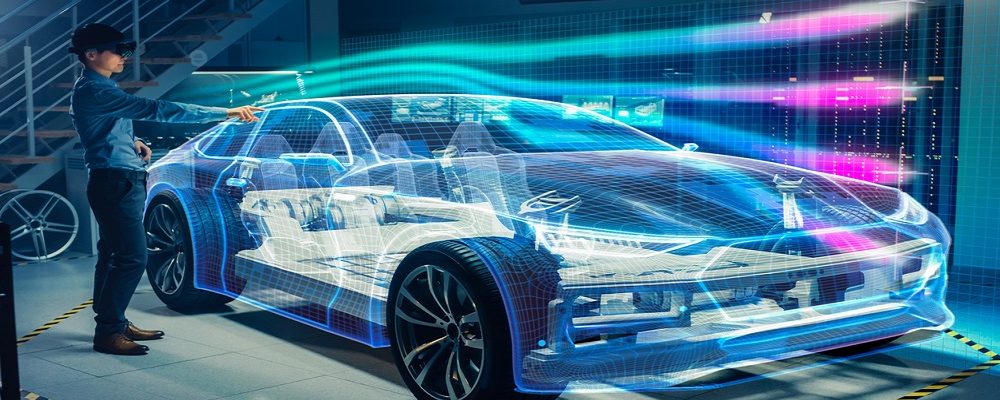
How Virtual Reality is used in Designing of Vehicles?

How Virtual Reality is used in Designing of Vehicles?
The development of technology has made rapid changes in the Automotive Industry. Manufactures are trying to adapt to the new technologies to deliver the best vehicles to the customers. The advent of Virtual Reality (VR) has made lots of significant changes in vehicle manufacturing.
Virtual Reality transports the user to a simulated environment. The VR technology gives a fully immersive experience by closing the user’s real world. VR has completely revolutionized the process of designing and developing new vehicles. Pandemic is also one of the major reasons for the widespread adoption of VR in many ways.
When the pandemic hit the world, many companies were forced to close their offices. The remote work culture came in and automotive manufacturers turned down the use of VR technology to design new vehicles. VR automotive designs include virtual prototyping and the use of simulation technology. Designers develop realistic elements using the 3D technology and then integrate them with the prototype to ease the process. This will direct the designer closely to the product even before coming to the real world.
Use Cases for VR in Automotive Industry
1.VR Prototyping
In the traditional designing process, there is a need to spend a lot of time on building a complex physical prototype, but now virtual prototyping has simplified the research, development, and design process and completely cuts the costs of the entire pre-manufacturing cycle. Designers can easily operate the full-scale 3D models of car parts to build full vehicle. They can also make adjustments according to the safety rules, designs, and requirements of the clients.
2. Remote Training in Automotive Industry
The automotive teams can work efficiently in collaborative projects anywhere across the world. VR training software is useful during the manufacturing process and after-sales process. Mostly it is would be the part of complete corporate training programs to match the brand image. Sometimes automobile owners also get training for secure driving with VR models with particular car models. The users can operate the virtual car like a real car except for risks with humans and other vehicles. The automotive VR apps provide textual, audio, and video instruction for better results.
3. VR Vehicle Production Process
It is not only employed in the designing process but also the manufacturing and assembly process. In the traditional method, compiling and maintaining accurate product configuration data has typically been difficult and time-consuming. Compiling and maintaining accurate product configuration data has typically been difficult but with VR assembly operator line they can examine the evaluate the repeated operation. It can be evaluated based on the CAD model.
4. VR in Automobile Showrooms
This VR technology is being largely used by manufacturers and dealers to boost sales. It can also increase online sales by setting up virtual showrooms where potential buyers can view the inner and outer parts of the car. The virtual cars displayed online are the exact replicas of the physical cars. With this, the buyer can customize the inner and outer components according to their requirement.
Benefits of VR in the Automotive Industry
- VR technology speed up the designing process. Designing a model or prototype can take several weeks but with VR it can be done in hours.
- Automotive manufacturers can quickly finalize the new designs with VR and start with the production process.
- VR can save a lot of money by eliminating the need for a prototype model. This process will result in huge financial savings for automotive manufacturers.
- VR helps the designers in getting close to the life-size model of the vehicle. As a result, design flaws can be identified more quickly and fixed earlier in the process.
- VR solutions allows the designers to change their viewpoint from the driver’s seat so that he can find and fix the problems according to the driver’s visibility in the first stage of the designing process.
- Training the designers with VR technology does not require more time. According to the experts, it is estimated that it takes few hours to get the complete training.
Conclusion
Virtual Reality simplifies the design process which helps in saving a lot of costs and resources. It is also employed in other parts like production, training, and sales. It provides a lot of options for customers in experimenting with new vehicle designs. VR technology help the technicians with an immersive 3D environment featuring different cars. With the new tools at their disposal, they can confidently understand the different components.
Sapizon Technologies is a leading AR and VR development company in delivering an immersive and thrilling experience to different industries. We are a team of skilled and experienced professionals in building the end-to-end AR and VR solutions.
Visit https://sapizon.com/vr-ar-solutions/ to know about our AR and VR offering.